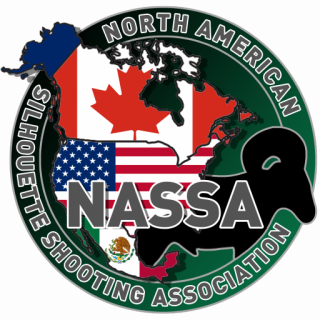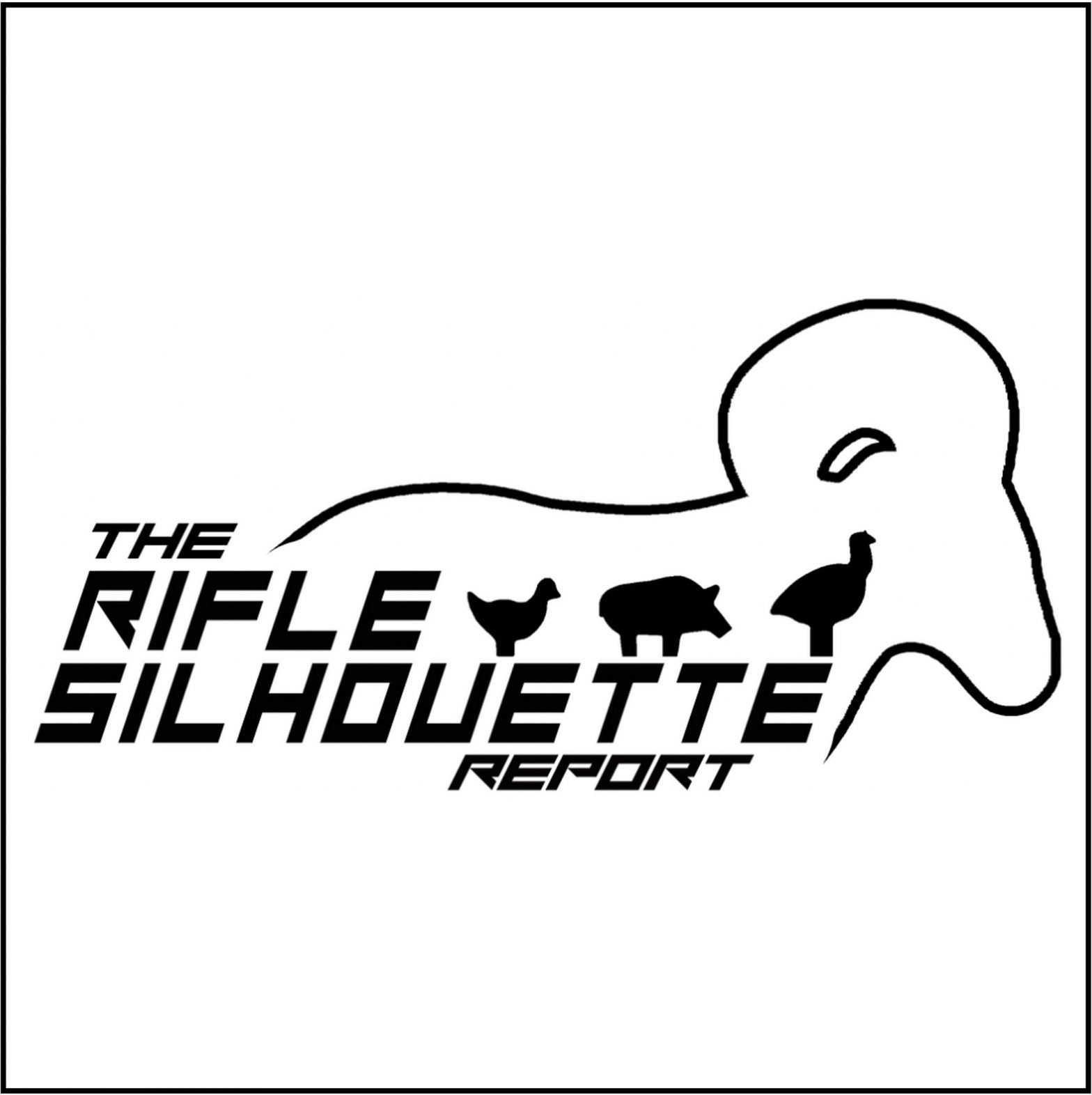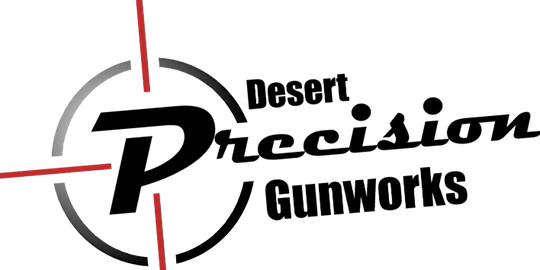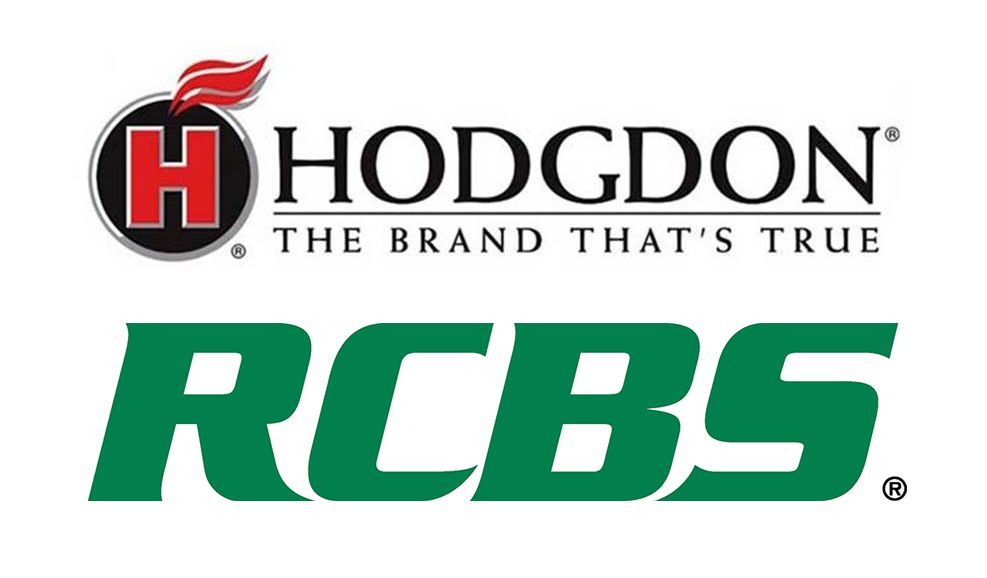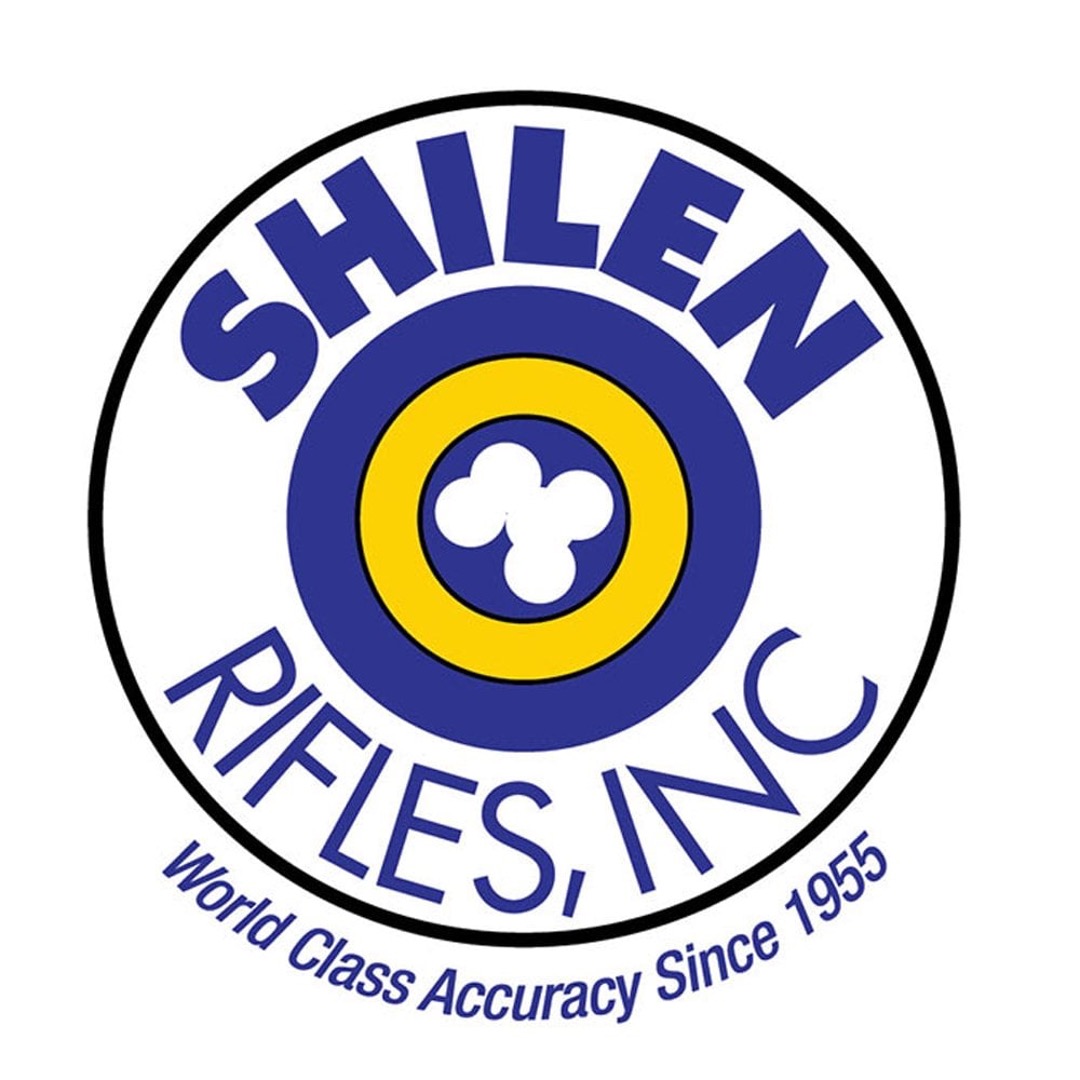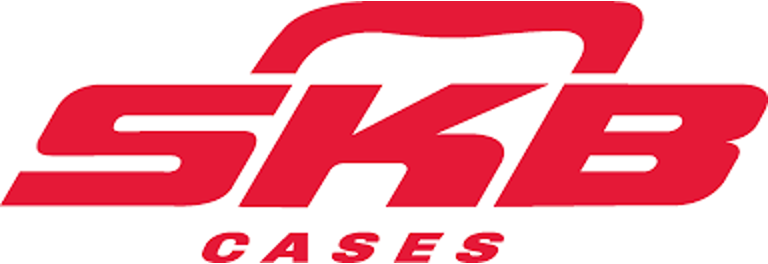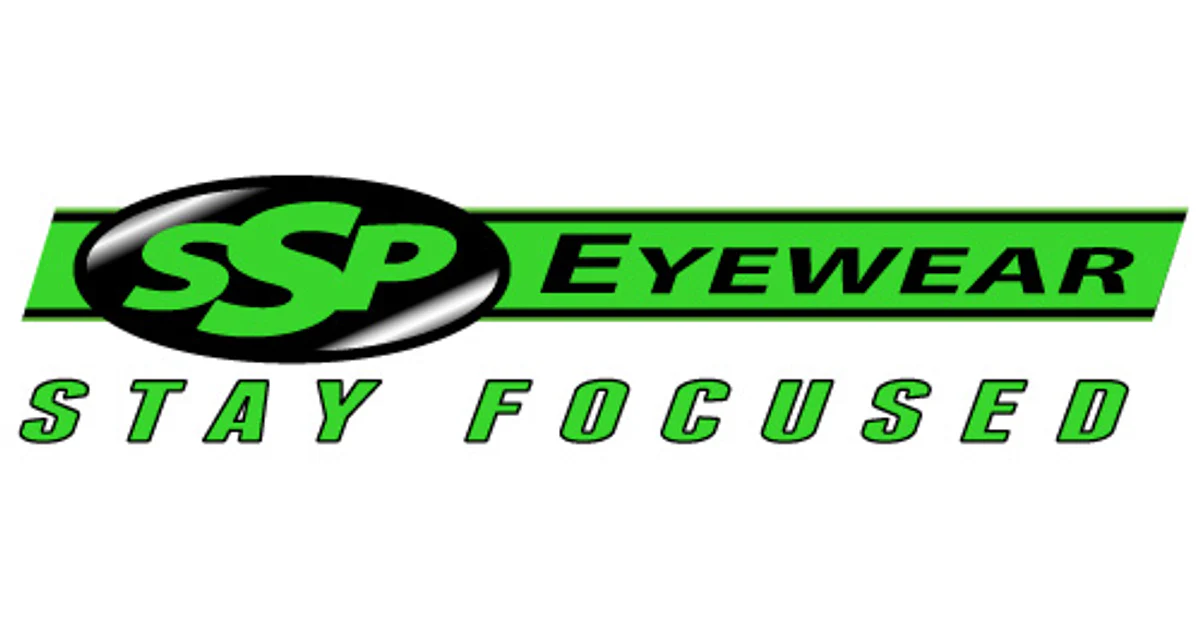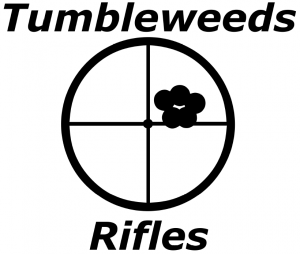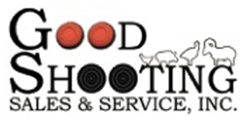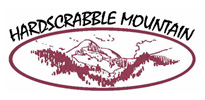Creating habits that lead to success.
“If you can dodge a wrench, you can dodge a ball.” — Patches O’Houlihan
Happy New Year! It’s nearly the end of January already, so probably a little late to be wishing everyone a happy new year; but this is the first post to The Rifle Silhouette Report for 2023 so this is my first chance to tell you that I hope you are enjoying a wonderful new trip around the sun. I actually sat down in the first week of January and wrote a post on new year’s shooting resolutions, but I didn’t make any shooting resolutions so the post was kind of dumb and it got scrapped. I do use the winter to consider changes I want to make for the next shooting season, usually slight equipment changes, but after evaluating the 2022 season nothing came to mind. I did consider keeping a shooting journal in 2023 — I’ve heard a shooting journal is ESSIENTIAL to competitive shooting, and I don’t dispute that — but I’ve never had much interest in writing down my thoughts after a match. Usually those thoughts would come down to one or two words: “happy,” or “annoyed” — something like that. I’m not the type that can think of a nice poem to perfectly encapsulate my feelings and emotions after shooting a rifle for a few hours. So I declined the shooting journal idea. I would like to hear from some of you that do keep a shooting journal. How do you organize your journal? Do you refer back to it? Do you think it helps you to improve? Do your shooting poems rhyme or are they free verse? Leave a comment below or send me an email and let me know!
While journaling is not something I do much of, preparing for matches is something that I do PLENTY of! By far the question I get more than any other from silhouette shooters all over the world is “how should I practice.” Obviously, I could write a LOT about this subject, and I plan to. So this is Part 1 of this series.
Let me start by saying that there are many methods and ways to practice and to shoot silhouette and I am by no means an expert on all of those different ways. As I’ve said before, I am not here to tell you what to do. I can tell you the things that work for me, and you are welcome to try those things. If you read something in the methods that I talk about that is different from what you’ve heard from other top shooters/coaches, please don’t assume that I think those other methods are wrong or ineffective. I prepare for shooting in the way that I believe most effectively helps me to be the best that I can be at shooting the way that I shoot. How I prepare and shoot is going to be different than how some other shooters do it. It may be different than you choose to do it, and that’s great.
Let’s start by considering the mindset that goes into preparation. You probably noticed that this post is entitled Training, Part 1 and not Practice, Part 1. This is just semantics, but the important thing to take from that is the lens by which we view what we are doing with our shooting time. I prefer to think of my time as training rather than practice because training feels and sounds to me more focused and more deliberate. It also takes my mind away from just shooting and onto the other things that I feel I need to do to compete at my best, which includes exercise, eating properly, and the most important part, getting stronger mentally. If I’m going to spend my valuable time doing it, I’m going to be serious about it and training is serious.
Training mindset is a big-picture thing. There is one more big-picture thing that we need to go over before we get to technique and how-to. That second thing is to define what it is that we are trying to do with our training time. Why are we training? Most people will say that we are training to get better, but that is a pretty useless goal for our training. Instead, I specifically set up my training with the main goal of developing habits that will cause me to hit more targets. Why am I focused on developing habits?
A habit is something that we do automatically. We all have habits. Some are good, some are not good. If you are in the habit of wearing a seatbelt, you automatically buckle your seatbelt when you get into a car. If you are in the habit of scrolling on social media, you automatically reach for your phone when you have free time. We are what we continually do, and our habits are what we continually do. Creating proper habits is essential to shooting silhouette well. Silhouette is a repetition sport. We are attempting to repeat a really good shot over and over. To make a good shot we must do the right things. To make a good shot again and again we must do the right things again and again. We need to create habits of doing the right things so that we do them automatically every time we take a shot. We don’t want to have good follow-through only when we purposefully think about having good follow-through. We want to develop a habit of following-through so that we do it automatically every single time we take a shot.
Remember when I talked earlier about there being many different ways to shoot well? Habit-forming is NOT one of those things that you can choose to ignore. This is not optional! Every single silhouette shooter has habits that affect their shooting. Every single top silhouette shooter has habits that lead to hitting targets and every single one of those shooters has used their training to develop those habits. The optional methods come into play when deciding which habits we want to develop to perfect our chosen style of shooting. Again, I can only tell you how I developed my habits that make up my shooting style. There are other habits that are essential to other shooting styles. Each part of this training series will focus on training methods to develop a habit or habits that I use on each and every shot.
TRAINING PART 1 — DEVELOPING THE HABIT OF SHOOTING AT A SPOT
Usually everything we see in the the movies is junk. Rarely do we ever learn anything of real value. However, Benjamin Martin (lead character in the movie “The Patriot” played by Mel Gibson) has a great line that I’m sure you’ve heard as he talks to his sons about shooting: “aim small, miss small.” The premise is that if you aim at a small spot on the target, and you barely miss the spot, you will still hit the target. That is why I aim at spots on each target instead of aiming at the target itself. Aim small, miss small, hit the target.
Of course, to learn to aim at little spots takes work; and the great thing you will find once you start working at aiming at spots is that you can actually hit little spots way more than you think you can. If you can hit a spot, you can hit a target! Every single time I take a shot at a silhouette target, or at a paper target, I’m aiming at a small spot on that target. Not just when I remember to aim at a spot; not just when there is a visible spot on the target to aim at; not just when I’m shooting great, or shooting bad; EVERY SINGLE TIME. Shooting at spots on the target is my HABIT.
I know what you’re thinking, “okay great, shoot at spots, I’ve heard that before. Why all the talk about making it a habit? Just find a spot and shoot at it.” Well, it’s not that simple, and here’s why. Let’s assume that you and I are both shooting at a big match. You’ve been instructed to shoot at spots on the target, and you have listened to that instruction. But I have a habit of shooting at spots. Here is how my habit beats your head knowledge: As the match moves on and the pressure builds, we resort to the things that are ingrained in us. We resort to the things that are automatic. So somewhere along the way you start taking “good enough” shots. It gets hard to get to the spots you are aiming at and your brain tells you to take the shot because you’re on target. Sure, you’re not on the spot (or even near the spot) but that shot is “good enough,” so you take the shot and get a hit. As the match goes on you keep going back to that “good enough” shot and keep taking them, but this time you flinch a little and move the rifle a bit and instead of barely missing the spot and still hitting the target, you barely move from the non-ideal place you break the shot and barely miss the target. You have a few more sloppy misses like that on “good enough” shots and add that to a couple of “good enough” shots that the wind blew off because you were on the wrong side of the target and those misses start adding up. After the match, you have that feeling that you were shooting pretty good but had some unexplained misses on “good” shots.
Contrast that with me and my habit of shooting at spots. It’s so ingrained in me to hit the spot that I almost can’t take a shot unless it’s on the spot I’m trying to hit. I don’t take “good enough” shots because my habit is to take shots at the ideal spot on the target. On each shot, I’m fighting to get to that spot, and even though I’m not perfect on my trigger-pull, or I flinch just a little, my shot misses the spot, but it hits the target. When my spotter gives me the perfect spot on the proper side of the turkey, I automatically do whatever it takes to get to that spot and the wind doesn’t blow my shot off the target because I broke it on the correct side of the target. So I’m getting hits on shots that aren’t fundamentally perfect because I’m putting max effort into getting to my spot. I may not be hitting every spot, but I’m not missing them by much and I’m hitting the target.
As you can see, the key to shooting at spots is not to actually hit the spot. The key is to put full effort into hitting the spot on every single shot. It’s the effort that makes the shot good. It’s never taking a “good enough” shot because the habit forces me to automatically put the effort into hitting the spot. I’m not giving up on the shots. I’m trying to hit the spot, even when the pressure is on. Hitting the spot is my habit.
TRAINING TO HIT THE SPOT
Okay, now we see the importance of creating good habits and, for me at least, the importance of creating a habit of always shooting at a spot. How do we use our training to create this habit?
One thing that any spot-shooter needs to learn early on is that the target doesn’t matter when you are shooting at spots. Shooting at a chicken is just like shooting at a pig, which is just like shooting at a turkey, which is just like shooting at a ram. We aren’t shooting at silhouette targets; we are shooting at spots on silhouette targets. So our shooting training is no longer going to be shooting at silhouette targets, we need to learn the discipline of shooting at a dot.
Warning! This method of training is not very much fun!
Here is how I start training a relatively advanced shooter (high A-class or better):
Go to the range with your smallbore rifle or air rifle and some ammo. Set your scope to your chicken setting. You’re going to shoot at the chicken distance, 40 meters for smallbore or 20 yards for air rifle. Get a sharpie and a blank sheet of paper and make a dot on the paper about the size of the bullet you’re shooting (.22 for smallbore or .17 for air rifle). Set the paper at the chicken distance. Now hit the dot.
You need to repeat this exercise so many times that you get to the point that all you can think about is hitting that dot. Over and over and over and over and over. You are becoming a spot shooter. Shooting at spots is what you do. It’s all you do. It’s what you dream about. Every time you see a dot anywhere in the world you automatically visualize your reticle moving to that dot. You shoot enough to create a habit of shooting at spots.
Other than creating a habit of shooting at spots, you will get much better at actually hitting the spot. In fact, after a little time you will be shocked at how often you hit that little dot! And you’ll get really good at almost hitting the dot. You’ll start to wonder how you ever miss a silhouette target! That is called confidence, and if habits are essential to shooting silhouette well, confidence is equally essential to winning your class at silhouette matches.
You want to shoot at the chicken distance to lessen the effect of any wind and to keep from having to change your sight settings. Keep it simple. You’re training yourself to hit spots, not read wind and adjust your scope.
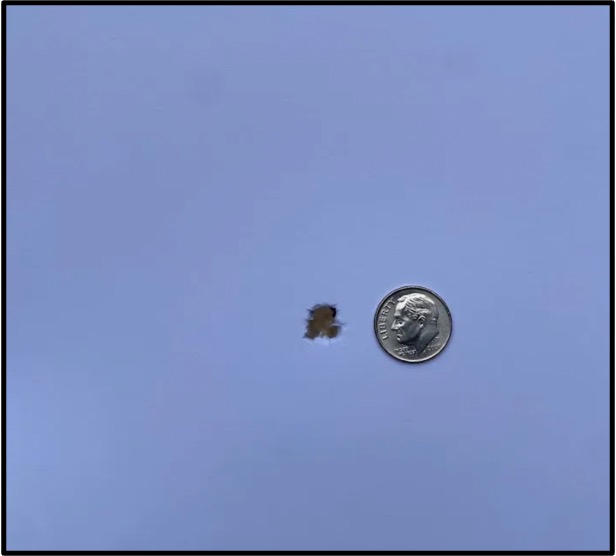
This is a picture of five shots offhand with my air rifle at 20 yards. This is what you can do when you get really good at hitting spots!
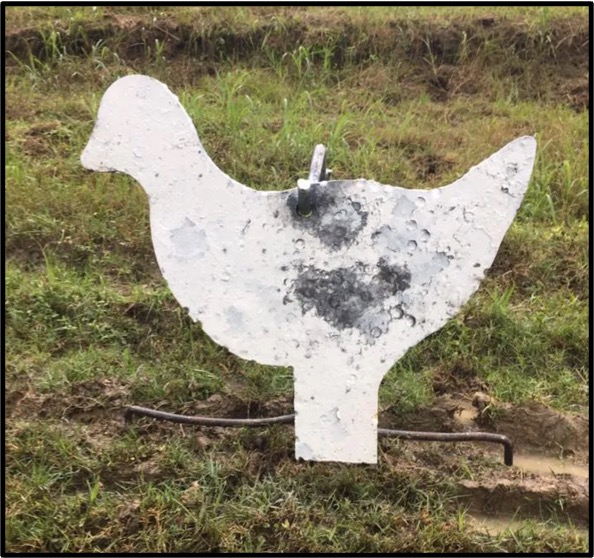
This is 10 shots with a highpower rifle at 300 yards on a chicken swinger scaled for 300 yards. I hit the first shot in the middle and then just aimed at that spot for the rest of the shots.
Of course, since we’re going to be training every day to create a habit of hitting spots, it cant be all fun and games shooting nothing but live .22 rounds and pellets at little dots. Eventually we are going to have to dry fire. Unfortunately, the method of creating a habit dry firing is the same as live firing. You guessed it, dry firing at a dot! I cheat a little bit here. My dry-firing targets are silhouette targets printed on a piece of paper scaled to 16 yards since that’s the distance from my bedroom down the hall. I simply drew a small dot in the middle of each target with a sharpie and I shoot at the dot in the center. If I don’t break the shot on the dot and follow-through on the dot, I consider it a miss even though it would easily be a hit on the target. My habit is to shoot at spots, and I do it on EVERY SINGLE SHOT I TAKE.
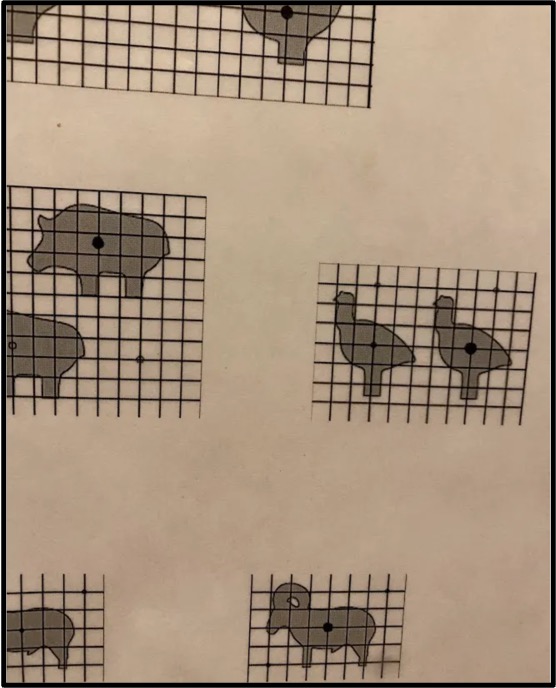
My dry-fire targets with dots:
Remember, laser focus on the spot you’re trying to hit – STARE at it! When your reticle gets to the spot, break the shot. You need to be able to pull the trigger without moving the rifle – maybe that will be the habit we need to work on for Part 2! Then follow through. It’s that easy!
A word about shooting at spots on silhouette targets: The spot that you shoot at is of course chosen by your spotter according to the wind and any other conditions that he/she is seeing. If there is a bullet mark or a smudge or a paint chip to shoot at, go for it! There will not always be an actual aiming point in the spot that you need it. In that situation, you need to create your own spot in your mind. Visualize a spot in your mind on the point you need it. Stare at that point. Let your reticle come to that point. Break the shot. Follow through. Repeat it EVERY SINGLE TIME.
So, if you’re interested, go try that out and we’ll get to Part 2 sometime later. I am coaching a friend and he is allowed to shoot only at dots on paper unless he is shooting in a club match. He’s been doing it for months. We will keep that training method exclusively until March or April; or maybe for another year. Whatever it takes to create that habit and get really good at hitting those spots!
QUESTION
This is a good time to answer a question I received a while back:
To shoot paper silhouette should the silhouette be white on dark paper or black on white paper or does it matter?
Everyone should be able to give my answer to this question after reading the above. My best answer to this question is neither, shoot at dots on the paper as just described. Since that answer is not really an option given to me by this question, I would suggest a white target on a gray background. You don’t want black paper surrounding the white target because the reticle will get lost outside the target and that is not realistic. You only want to practice shooting at black targets if you’re going to be shooting black targets in competition (like for a highpower match or if going to shoot in Mexico.) If you’re going to practice shooting white paper targets I would either draw a dot in the target to aim at or I would crumple up the paper then flatten it back out to give it some ridges like a painted steel target and give you something to focus on to aim at.
Thanks for taking the time to read this. By the way, I did make a non-shooting related resolution for 2023. It is to not use my iphone to kill time. I don’t want all my kids’ memories to be of me staring at my phone. It’s going really well so far! And I always try everything new for at least a year. Hopefully I will develop the habit of not looking at my phone unless it’s absolutely necessary. So, if you see me at a match staring at my phone, please do me a favor and remind me to put it down and read a book or enjoy the people and places around me.
Until next time, keep shooting and training to create those good habits!


